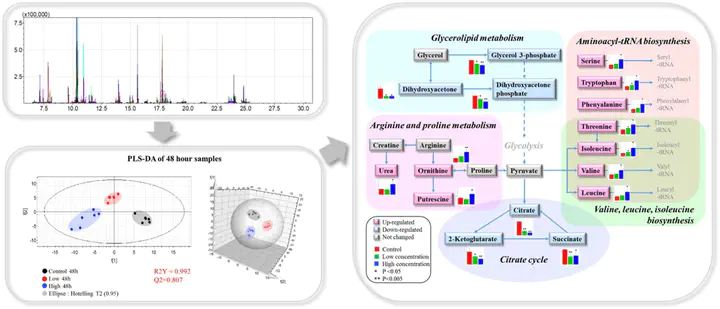Targeted toxico-metabolomics of endosulfan sulfate in adult zebrafish (Danio rerio) using GC-MS/MS in multiple reaction monitoring mode

Abstract
Endosulfan sulfate is a major oxidative metabolite of the chlorinated insecticide endosulfan. In this study, a targeted metabolomics approach was used to investigate the toxic mechanisms of endosulfan sulfate in adult zebrafish using the multiple reaction monitoring mode of a GC-MS/MS. The LC50 of endosulfan sulfate in adult zebrafish was determined and then zebrafish were exposed to endosulfan sulfate at one-tenth the LC50 (0.1LC50) or the LC50 for 24 and 48 h. After exposure, the fish were extracted, derivatized and analyzed by GC-MS/MS for 379 metabolites to identify 170 metabolites. Three experimental groups (control, 0.1LC50 and LC50) were clearly separated in PLS-DA score plots. Based on the VIP, ANOVA, and fold change results, 40 metabolites were selected as biomarkers. Metabolic pathways associated with those metabolites were identified using MetaboAnalyst 4.0 as follows: aminoacyl-tRNA biosynthesis, valine/leucine/isoleucine biosynthesis, citrate cycle, glycerolipid metabolism, and arginine/proline metabolism. Gene expression studies confirmed the activation of citrate cycle and glycerolipids metabolism. MDA levels of the exposed group significantly increased in oxidative toxicity assay tests. Such significant perturbations of important metabolites within key biochemical pathways must result in biologically hazardous effects in zebrafish.